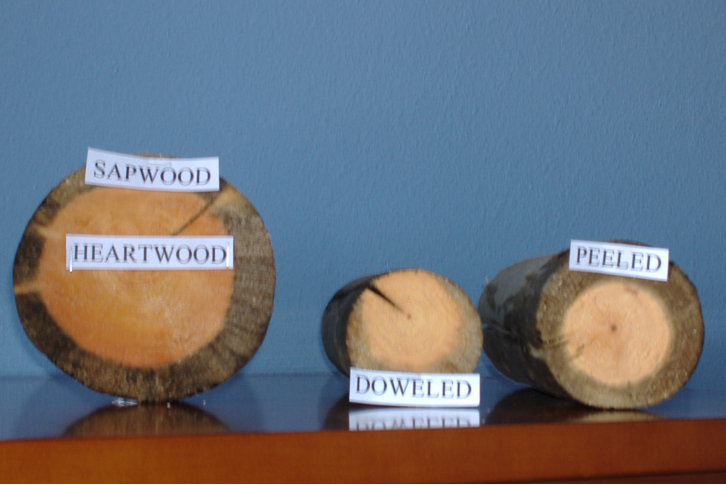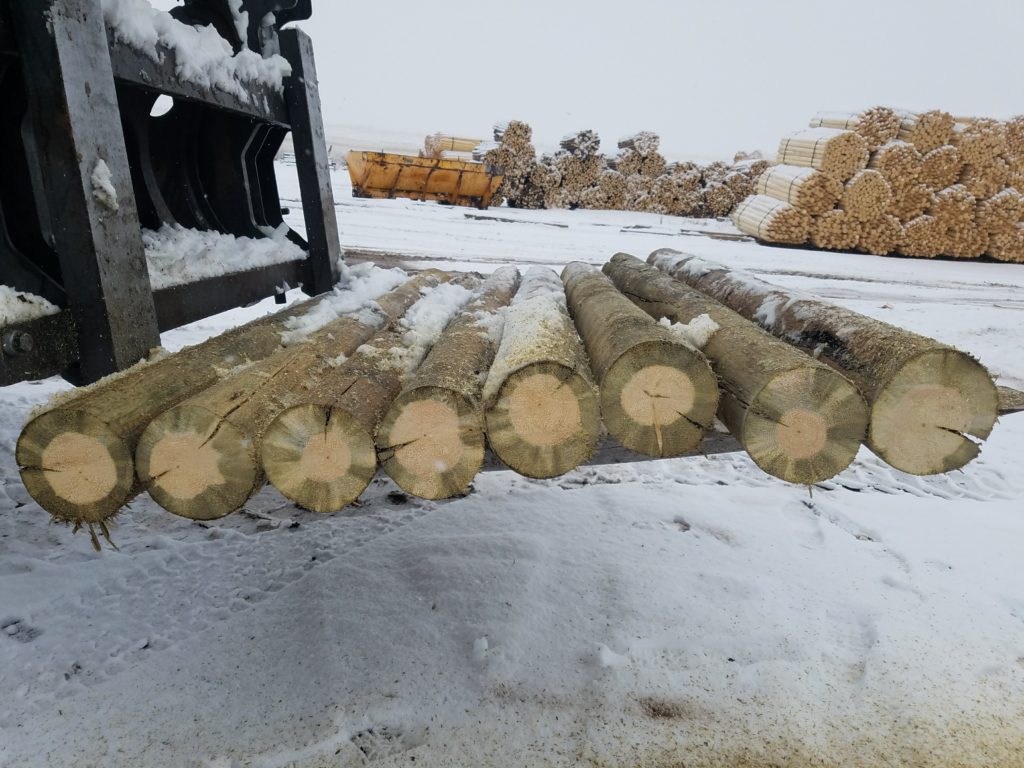What makes a good fence post ?
There are several characteristics present in all quality fence posts. Strength, treatment retention and quality finish must all be present in good posts.
Strength comes from sapwood, or the exterior portion of a tree. A quality manufacturer will be cautious to only peel away the bark and the cambium layer leaving all of the sapwood possible to insure the strength of the finished product.
Materials must be treated with low moisture content so the fibers will accept the treatment chemical. Treatment retention is also linked to sapwood because heartwood or the inner part of the tree will not readily accept a quality treatment. In short, the more sapwood present, the better the product. We hold our treatment to a higher standard than what you will find elsewhere.
A quality peeled product insures an ample amount of sapwood is present for treating and strength. Some new manufacturing methods such as doweled products, which produce a uniform post may not always allow for the strength and treatability that is needed.

The manufacturing method used at Lodgepole Products will always leave an ample amount of sapwood ensuring a quality peeled product. When care is taken to maintain the machining process, the finish of our peeled posts rivals that of uniform doweled material.
Our peeling process follows the contour of the tree leaving the majority of sapwood while a doweled post, in making a perfect round, can expose the untreatable heartwood at the edges of the post, creating certainty in early decay and product failure.
When you purchase a peeled post over a doweled post you are buying 40% more wood. Instead of the manufacturing process wasting the material, our peeled product gives your fence more muscle.

